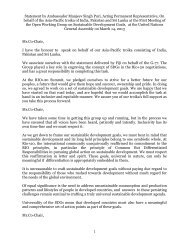STATE OF THE WORLD'S CITIES 2012/2013 Prosperity
STATE OF THE WORLD'S CITIES 2012/2013 Prosperity
STATE OF THE WORLD'S CITIES 2012/2013 Prosperity
You also want an ePaper? Increase the reach of your titles
YUMPU automatically turns print PDFs into web optimized ePapers that Google loves.
State of the World’s Cities <strong>2012</strong>/<strong>2013</strong><br />
Urban Change in<br />
Developing Countries<br />
DIvERGENT URBAN GROWTH PATTERNS<br />
In the last decade, the urban population in the developing<br />
world grew an average 1.2 million people per week, or<br />
slightly less than one full year’s demographic growth in<br />
Europe’s urban areas. Asia dominated the picture, adding<br />
0.88 million new urban dwellers every week. Africa was the<br />
second largest contributor with an additional 0.23 million<br />
per week, dwarfing Latin America and the Caribbean’s<br />
0.15 million weekly increment.<br />
Africa: The urban population is set to outstrip<br />
Europe’s: In what promises to be one of the more<br />
remarkable forthcoming developments in the overall<br />
pattern of urbanization in Africa, the region’s population<br />
is poised to outgrow both Europe’s and Latin America’s,<br />
which was the first region to become predominantly urban<br />
in the developing world. In 2025, the aggregate urban<br />
population of Africa, Europe, Latin America and the<br />
FACT<br />
Urbanization in Africa has not yet brought the economic<br />
development and degree of prosperity that might have<br />
been expected. Inadequate education and physical infrastructure,<br />
combined with poor governance, have constrained the efficient use<br />
of productive resources, and the industrial development that might<br />
have come with it. At the same time, the ongoing urban economic<br />
momentum in Africa is a result of a number of the typical factors of<br />
prosperity at work in other regions of the world, such as economies<br />
of agglomeration, location advantages, and diversification of the<br />
economic base, albeit all in nascent form.<br />
FACT<br />
Asia is also confronted by the same urban paradox as<br />
Africa. Despite high concentrations of population in large<br />
cities, the continent ranks among the least-urbanized regions in<br />
the world (45 per cent urban). The tipping point for ‘urban Asia’ is<br />
expected to happen earlier though (around 2020s).<br />
POLICy<br />
The economic success of many countries/cities goes<br />
hand in hand with urbanization. Cities must give<br />
more attention to rising inequalities and the worrying trend of<br />
environmental degradation.<br />
28<br />
Caribbean is expected to reach 642 million, 566 million<br />
and 560 million, respectively. In an apparent paradox, by<br />
that same year 2025 Africa will still be the least urbanized<br />
region in the world (45 per cent of the population).<br />
Asia: Moving into the “Urban Century”: Half of the<br />
world’s urban population now lives in Asia. This region<br />
has accounted for about 65 per cent of the demographic<br />
expansion of all urban areas across the world since the<br />
beginning of the 21st Century. Undoubtedly, this is the<br />
“Asian Urban Century”. 13 Large population concentrations<br />
in mega-cities are to remain a prominent feature in<br />
urban Asia (today, seven out of the 10 most populous cities<br />
of the world are in this region). In the recent past, Delhi<br />
and Shanghai have joined the league of ‘meta-cities’, those<br />
massive conurbations of more than 20 million people. It is<br />
expected that by 2020, another three Asian cities – Beijing,<br />
Dhaka and Mumbai – will have reached the 20 million mark.<br />
Latin America and the Caribbean: Inter-city migration<br />
predominates: This is the most urbanized region in the<br />
world (80 per cent of the total population, compared with<br />
Europe’s 73 per cent).The urban transition in this region<br />
was achieved in the early 1960s, or about 16 years before<br />
Western Asia (the second sub-region in the developing<br />
world to become predominantly urban), and 30 and 45<br />
years respectively before Southern and North Africa (or, on<br />
current trends, some 70 years before the whole of Africa).<br />
CONvERGENT URBAN GROWTH PATTERNS<br />
Cities are expanding in a discontinuous, scattered and<br />
low-density form that is not sustainable: A defining feature<br />
of cities in the developing<br />
world is an outward<br />
expansion far beyond<br />
formal administrative POLICy<br />
boundaries, largely<br />
propelled by the use<br />
of the automobile and<br />
land speculation. A large<br />
number of cities – whether<br />
in Angola, Egypt, Brazil,<br />
China, or almost any other<br />
country – feature very<br />
land-consuming suburban<br />
sprawling patterns that<br />
often extend even to<br />
farther peripheries. A study<br />
on 120 cities shows that<br />
urban land cover grew,<br />
African<br />
cities must<br />
connect to regional<br />
and global business<br />
networks, enhance<br />
quality of life, improve<br />
basic infrastructure<br />
and communication<br />
networks, address<br />
public transport<br />
deficiencies and<br />
environmental<br />
conditions, and respond<br />
to inequality and<br />
poverty issues, if they<br />
are to turn into real<br />
engines of national<br />
growth and prosperity.


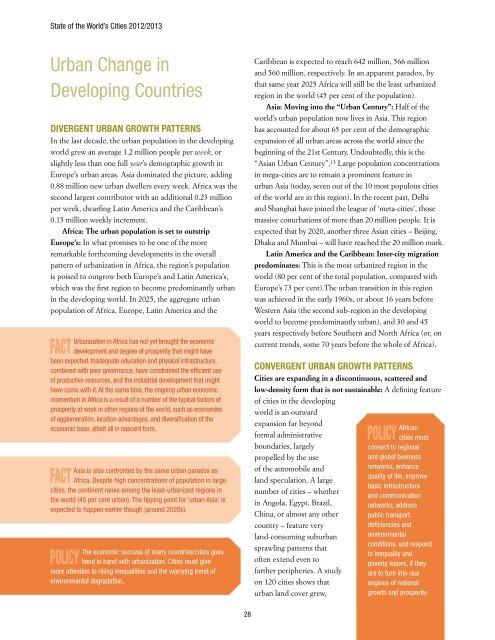

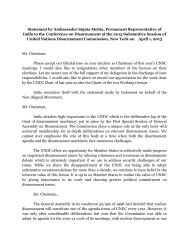
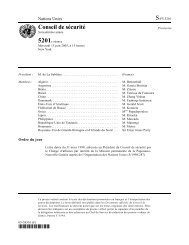
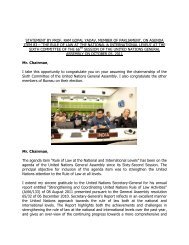
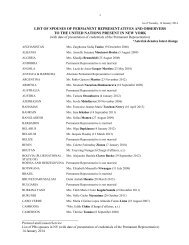
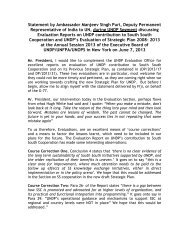
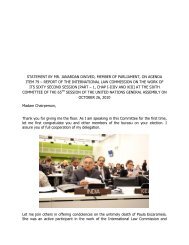
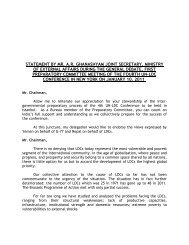
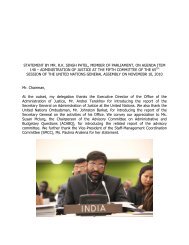

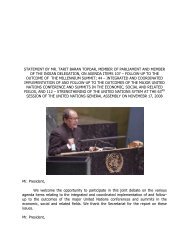

![1 statement by dr.[mrs] kakoli ghosh dastidar - Member States Portal](https://img.yumpu.com/27526598/1/190x245/1-statement-by-drmrs-kakoli-ghosh-dastidar-member-states-portal.jpg?quality=85)
